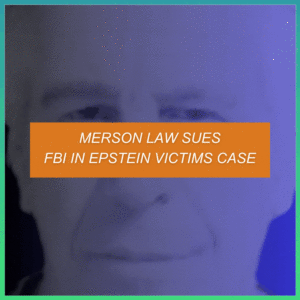VOL. IV NO. 1 LAVERN’S LAW
Editor in Chief: Steven E. North, Esq.
Case Editor: Emily C. Vaught, Esq.
Contributing Editor: Jesse R. Mautner, Esq. + Allie Shaffer
1. CASE OF FIRST IMPRESSION? – LAVERN’S LAW Interpreted Saffa v. Katz, 2023 NY Slip Op 23307 (Sup. Ct. Queens Cnty, October 6, 2023) [linked here]
Background: On May 10, 2022, the plaintiff commenced a medical malpractice action under Lavern’s Law against Dr. Katz, alleging that the defendant negligently failed to diagnose plaintiff’s vaginal cancer based upon an MRI of Dec. 2, 2018. The defendant moved to dismiss the suit claiming that the plaintiff failed to timely file suit within the 2 and ½ year medical malpractice statute of limitations.
The defendant argued that the tolling provisions of Lavern’s Law did not apply and that the action should have been commenced on or before July 2, 2021, based upon the date when the plaintiff failed to show up for her follow-up visit on January 2, 2019. The plaintiff opposed the motion claiming that she did not obtain the imaging results from her December 2018 MRI until November 2021, thus the action was timely filed based upon the Lavern’s Law tolling.
The defendant maintained that the plaintiff “should reasonably have known” of her condition if she had made reasonable efforts to learn of her MRI results by, among other things, appearing for her one month follow up visit. Holding: The trial court (Hon. Catapano-Fox, Supreme Court, Queens County) denied the defendant’s motion to dismiss and struck the defendant’s affirmative defenses.
The court rendered a decision which it described as involving a “novel issue” – that “Lavern’s Law” was applicable to this action holding that “the key consideration is when plaintiff knew or should have known of a negligent act or omission by defendant, and not when she learned that she had cancer.”
The court held that “[t]he focus and intention of the language [of Lavern’s Law] is on the date when a plaintiff became aware of malpractice, and not necessarily when she became aware of a medical condition.”
The court held that the cause of action against the defendant did not accrue until November 2021, thus the complaint was filed timely.
Editor’s Notes: (1) What is Lavern’s Law?
On February 2, 2010, 38-year-old Lavern Wilkinson presented to the emergency department at Kings County Hospital complaining of severe chest pain that she began experiencing while cleaning her apartment.
Ms. Wilkinson was ordered to undergo an EKG and chest X-ray, after which she was mistakenly informed by first-year resident Dr. James Willis that 2 the results of both tests were normal. In fact, the chest X-ray actually revealed the presence of a suspicious, 2-centimeter mass in Ms. Wilkinson’s right lung. The presence of the mass was confirmed in the attending radiologist’s report where he noted that Ms. Wilkinson should be ordered to undergo a follow up chest X-ray in 3 months.
Unfortunately, nobody at Kings County Hospital ever provided Ms. Wilkinson with this information – not on that day in 2010 or at any time thereafter, including during the 2 years of follow up appointments that she had with her primary care physicians at Kings County’s clinic.
It was not until Ms. Wilkinson returned to the emergency department in the Spring of 2012 complaining of wheezing and shortness of breath that a repeat chest X-ray was ordered and performed.
At that point, it was discovered that the nodule was cancerous and had doubled in size and spread to her left lung. Ultimately, it was determined that Ms. Wilkinson’s cancer had progressed to Stage IV with metastasis to the liver, spine, and brain.
In his note, Dr. Gary Briefel – the diagnosing physician – wrote that with respect to the February 2, 2010 visit: “apparently nobody saw the report, which suggested either repeating the X-ray or getting a CT scan . . . it was possible that a surgical cure could have been achieved.”
Ms. Wilkinson recalled Dr. Briefel giving her a hug and apologizing for the mistake. However, by that point, it had been more than 2 years and 6 months since the failure to diagnose on February 2, 2010, and the applicable statute of limitations (as it existed at the time) had expired.
1 Ultimately, Ms. Wilkinson passed away in 2013. These tragic events are what led the New York State Legislature to ultimately pass Lavern’s Law – named in Ms. Wilkinson’s honor. The statute, which went into effect in January of 2018, was created in order to remedy what the Legislature referred to as a “significant loophole in the law”.
Specifically, the Legislature sought to address the fact that in medical malpractice cases arising out of a misdiagnosis or the failure to diagnose cancer or a malignant tumor, the resulting malpractice and injury is often discovered well after the statute of limitation has expired.
Currently, Lavern’s Law – which is codified by §214-a [linked here] – states in relevant part that: “[a]n action for medical . . . malpractice must be commenced within two years and six months2 of the act, omission or failure complained of or last treatment where there is continuous treatment for the same illness, injury or condition which gave rise to the said act, omission or failure; provided, however, that: . . . (b) where the action is based upon the alleged negligent failure to diagnose cancer or a malignant tumor
3 , whether by act or omission, the action may be commenced within two years and six months4 of the later of either (i) when the person knows or reasonably should have known of such alleged 1 When the subject failure to diagnose occurs at a medical facility that is owned and operated by a municipality, the would-be plaintiff must comply with the 90-day notice of claim requirement and 1 year and 90 days statute of limitations (although those times would also be tolled by Lavern’s Law). GML § 50-e. 2 See Footnote 1. 3 Redundant language in the statute. A malignant tumor is cancer. 4 See id. 3 negligent act or omission and knows or reasonably should have known that such alleged negligent act or omission has caused injury, provided, that such action shall be commenced no later than seven years from such alleged negligent act or omission, or (ii) the date of the last treatment where there is continuous treatment for such injury, illness or condition.” A reading of the statute reveals that in medical malpractice cases arising out of a misdiagnosis or the failure to diagnose cancer, the 2 year and 6-month statute of limitations is tolled until the would-be plaintiff not only knew or reasonably should have known of the alleged malpractice, but also knew or reasonably should have known that such malpractice caused injury. While Lavern’s Law significantly expands patients’ rights, it must be noted that the expansion is not indefinite as there remains a 7-year outer limit on the right to bring a medical malpractice action for the failure to diagnose cancer. (2) What is the importance of Judge Catapano-Fox’s decision? The decision warrants further discussion based on its seemingly unique interpretation of Lavern’s Law. The plain language of the statute makes clear that the statute of limitations on a case involving the misdiagnosis or the failure to diagnose cancer should be tolled until it can be said that a would-be plaintiff not only knew or reasonably should have known of the alleged malpractice, but also knew or reasonably should have known that such malpractice caused injury. Here, however, the court stated in no uncertain terms that the “focus and intention of the language [in Lavern’s Law] is on the date when a plaintiff became aware of malpractice, and not necessarily when she became aware of a medical condition.” The judge further stated that “the key consideration [in interpreting Lavern’s Law] is when plaintiff knew or should, have known of a negligent act or omission by defendant, and not when she learned that she had cancer.” The language of the decision suggests that the court has narrowed the tolling provisions of Lavern’s Law to when the would-be plaintiff knew or reasonably should have known of the alleged malpractice, and not their injury. The decision also begs the question of whether a case such as this invoking Lavern’s Law should be resolved on a motion for summary judgment. Although the moving papers seemed lacking on this issue, is it not a jury question as to whether or not it was reasonable for the plaintiff to appear for her follow-up visit, and whether she would have reasonably learned of her condition at that time? Bonus Hypothetical: On January 1, 2020, Ms. Johnson, a 50-year-old woman, presented to her primary care physician complaining of pain in her stomach. After evaluating Ms. Johnson, her primary care physician ordered that she undergo an X-ray of her abdomen within the month. On February 15, 2020, Ms. Johnson phoned a local radiology group and set-up an appointment to have the X-ray performed on March 1, 2020. 4 On March 1, 2020, Ms. Johnson presented to her local radiology group and underwent an X-ray of her abdomen which revealed the presence of a suspicious, 3-centimeter mass in her stomach. Neither Ms. Johnson, nor her primary care physician, were ever informed of the X-ray results. On January 1, 2023, Ms. Johnson once again presented to her primary care physician complaining of pain in her stomach. During the visit, Ms. Johnson confirmed that the last time she was dealing with these issues, she followed her primary care physician’s order and underwent an X-ray of her abdomen. Ms. Johnson also informed her primary care physician that she never received the results from the X-ray which led her to believe that everything was normal. At that point, Ms. Johnson’s primary care physician obtained and reviewed the imaging report. It was then for the first time that Ms. Johnson actually became aware of the mass. The next week, the mass in Ms. Johnson’s stomach was biopsied and it was confirmed that she had Stage III stomach cancer that had metastisized from the suspicious lesion noted in 2020. On February 1, 2023, Ms. Johnson filed suit against the radiology group and the radiologist who performed the imaging for failing to communicate the results to her and to her primary care physician. The defendants subsequently moved to dismiss Ms. Johnson’s lawsuit, arguing that it had been more than 2 years and 6 months since the visit on March 1, 2020, and that there was no subsequent, continuous treatment. Is there a Lavern’s Law defense as to whether Ms. Johnson acted reasonably in not following up with the radiology group? If she failed to follow-up, were her actions unreasonable, and at what point in time would they be deemed unreasonable?








